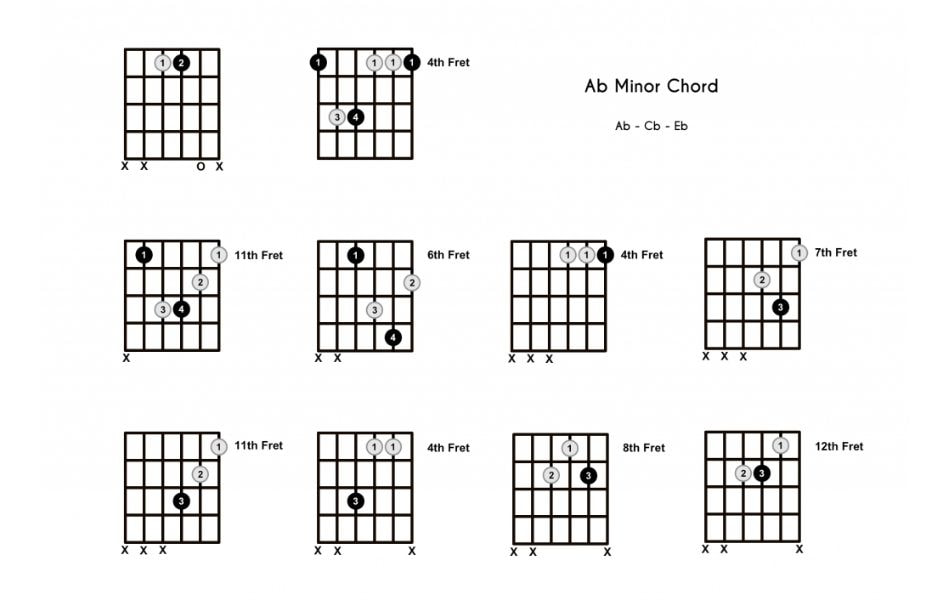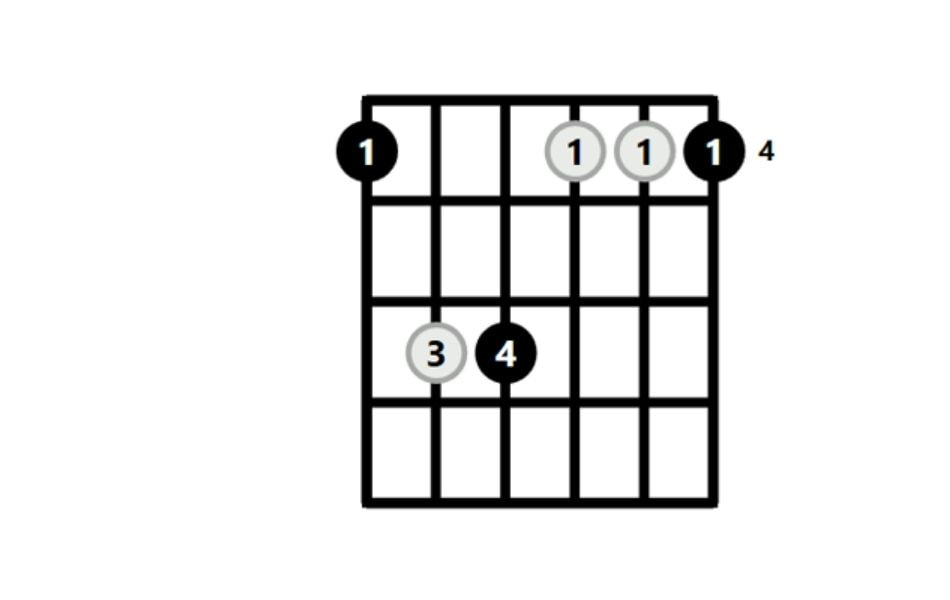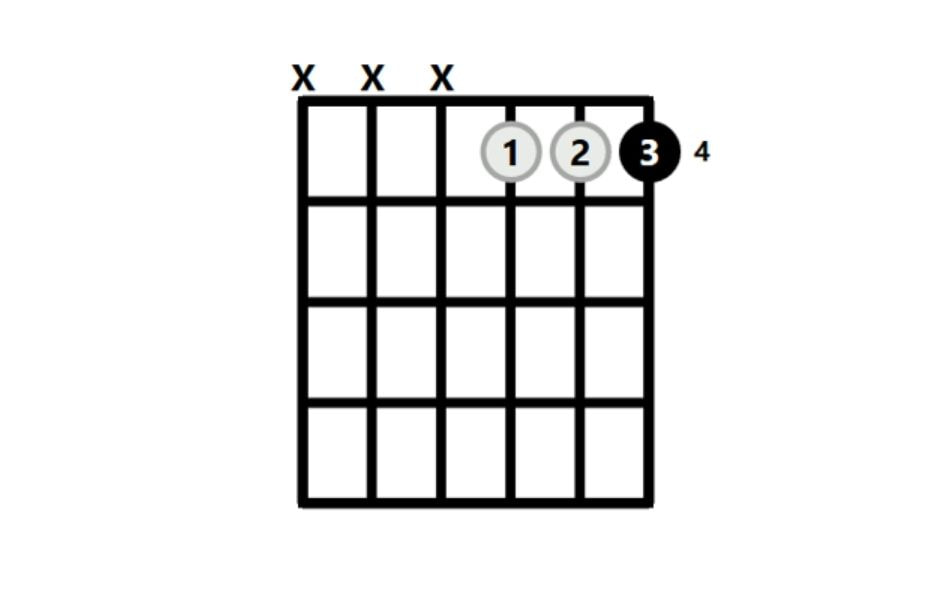The A flat minor chord, denoted as Abm, is a crucial chord in the guitarist’s repertoire, offering a rich tonal palette to create emotive and soulful sounds. In this comprehensive guide, we will delve into the top 10 ways to play the A flat minor guitar chord, each presenting a unique approach to conquer this essential element.
Contents
Understand A flat minor guitar chord
The Ab minor chord is constructed using the notes Ab, Cb, and Eb. It is derived by taking the 1st (root), flat 3rd, and 5th notes from the Ab Major scale. In terms of intervals from the root note, the Ab minor chord, like all minor chords, consists of a minor 3rd, Major 3rd, and a Perfect 4th (leading back to the root note).
Additionally, A minor serves as the relative minor of Cb Major. Furthermore, within the key of A flat minor, Ab minor is the inaugural chord, preceding the sequence of seven chords: Abm, Bb diminished, Cb+, Dbm, Eb, Fb, and G diminished. Understanding these foundational aspects is paramount to mastering the essence of Ab minor in musical compositions.
Top 10 A flat minor chords

Standard A flat minor chord

The easiest Abm chord guitar

A flat minor guitar chord – barre chord
- Use your index finger to create a barre on fret 11, covering the 5th (A) to the 1st (E) string.
- Position your middle finger on the 2nd (B) string at fret 12.
- Place your ring finger on the 4th (D) string at fret 13.
- Press down the 3rd (G) string at fret 13 using your pinky finger.

How to play A flat minor guitar chord in a simpler way for beginners
A flat minor chord using 4 fingers
- Place your index finger on all strings at the 4th fret to create a barre.
- Position your middle finger on the 4th string (D string) at the 5th fret.
- Place your pinky finger on the 3rd string (G string) at the 5th fret.
- Do not play the 6th string (E string).
A flat minor chord using 3 fingers
- Place your index finger on the 4th string (D string) at the 4th fret to create a barre.
- Position your middle finger on the 2nd string (B string) at the 4th fret.
- Place your pinky finger on the 1st string (high E string) at the 4th fret.
- Do not play the 6th string (low E string).
A flat minor chord using only the index finger (the simplest way)
- Place your index finger on the 4th string (D string) at the 4th fret to create a barre.
- Do not play the 6th string (low E string).
- Do not play the 5th string (A string).
- Play the strings from the 4th string to the 1st string (D, G, B, and high E strings) at the 4th fret.
These methods will help you play the A flat minor chord in a simpler way, allowing you to become familiar with this chord and focus on improving your guitar skills. Practice regularly to become comfortable with this chord and enhance your playing ability.
In conclusion, from finger positioning variations to unique strumming techniques, we’ve uncovered a spectrum of possibilities to make the A flat minor guitar chord come alive in your music. As you continue honing your skills and musical expression, remember that mastery comes with practice, dedication, and the willingness to experiment.
